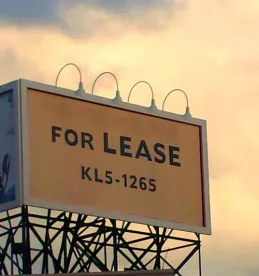Negotiation of a Subordination, Non-Disturbance and Attornment Agreement (commonly referred to as an “SNDA”) can pose challenges for property owners, mortgage lenders and tenants alike. What makes an SNDA unusual is that it is between two parties (mortgage lender and tenant) whose only connection with each other is that they have a contract with a common third party – namely, the property owner/borrower/landlord. As a result, it is sometimes difficult to arrive at common ground on the issues addressed in the SNDA, and it may be necessary for the owner/borrower/landlord to intervene in negotiations to reach compromise solutions acceptable to the mortgage lender and the tenant.
Why is an SNDA needed in the first place?
The simple answer is that an SNDA prevents unwanted consequences of the interplay between a mortgage and a lease. While laws vary from state to state, the general rule is that foreclosure of a mortgage (due to a loan default by the borrower) terminates any encumbrances on the property that are junior to the mortgage. Absent an SNDA (and absent contrary provisions in the mortgage or the lease), a foreclosure will therefore terminate a lease executed after the mortgage, while the party acquiring the property at the foreclosure sale will be bound by a lease executed before the mortgage, effectively stepping into the owner’s shoes as landlord. Termination of the lease is in most instances undesirable for both the new owner and the tenant. Likewise, assuming all of the landlord’s obligations under the lease may be undesirable for a new owner. The purpose of the SNDA is to spell out in advance what will happen in the event of a foreclosure, such that neither the new owner nor the tenant will suffer undesirable consequences as a result.
What’s in an SNDA?
The typical SNDA states that the lease is subordinate (or junior) to the mortgage, but that if the mortgage is foreclosed, the new owner will not disturb the tenant’s possession under its lease so long as the tenant is not in default of the lease’s provisions, and the tenant will attorn to and recognize the new owner as its landlord. Thus the lease will remain in effect, with the new owner becoming the landlord. However, because the initial draft of the SNDA is usually prepared by the mortgage lender, it will typically go on to provide certain protections for the new owner who has become the landlord. This is where the interests of the mortgage lender and new owner, on the one hand, and the tenant, on the other hand, diverge. For example, a mortgage lender’s form of SNDA will typically provide that after foreclosure the new property owner will not (i) be liable for acts or omissions of the prior landlord, (ii) be liable for return of any security deposit unless actually received by the lender and passed on to the new owner, (iii) be bound by rent paid more than one month in advance,(iv) be bound by amendments to the lease made without the lender’s consent, or (v) be liable for completing any construction of improvements to the tenant’s space. Many tenants will push back on some or all of these provisions, particularly, for example, if the landlord has extensive construction obligations under the lease. Compromises can usually be reached that both parties can live with, but occasionally agreement can’t be reached, and one or both parties decide they would rather take their chances without an SNDA than execute one they find too onerous.
It’s worth mentioning a few other provisions that may find their way into an SNDA at the behest of either the mortgage lender or the tenant. Most SNDAs drafted by mortgage lenders will require that the tenant notify the lender of any defaults by the borrower/landlord under the lease and allow the lender a period of time to cure the default before the tenant can exercise its remedies (which might include termination of the lease or rent abatement). Most lenders will also ask the tenant to agree to pay its rent directly to the lender upon notification that the borrower/landlord has defaulted under the loan, assuming that such remedy was included in the loan documents as it typically is. On the other hand, large retail tenants with bargaining power will often ask that the SNDA provide that the lease’s casualty and condemnation provisions take precedence over contrary provisions in the loan documents. Such lease provisions will often require that insurance proceeds and condemnation awards be applied to rebuild the property, while the loan documents will often permit the lender instead to apply such proceeds and awards to pay down the loan rather than rebuild.
Although negotiation of an SNDA can sometimes be contentious, if both the mortgage lender and the tenant are willing to compromise a bit, the end result will typically put both parties in a better (or at least, less risky) position than if no SNDA were signed.



 />i
/>i
